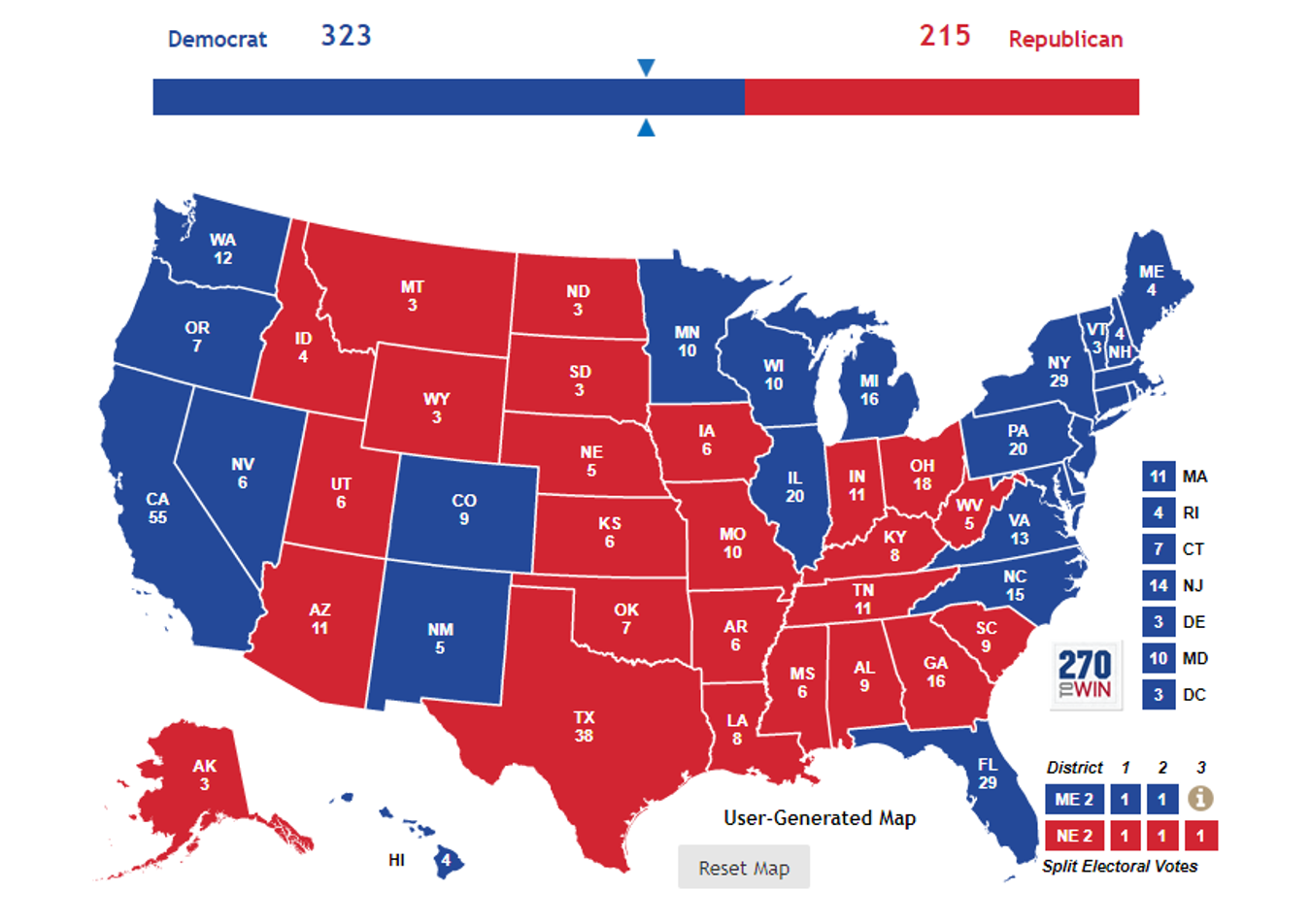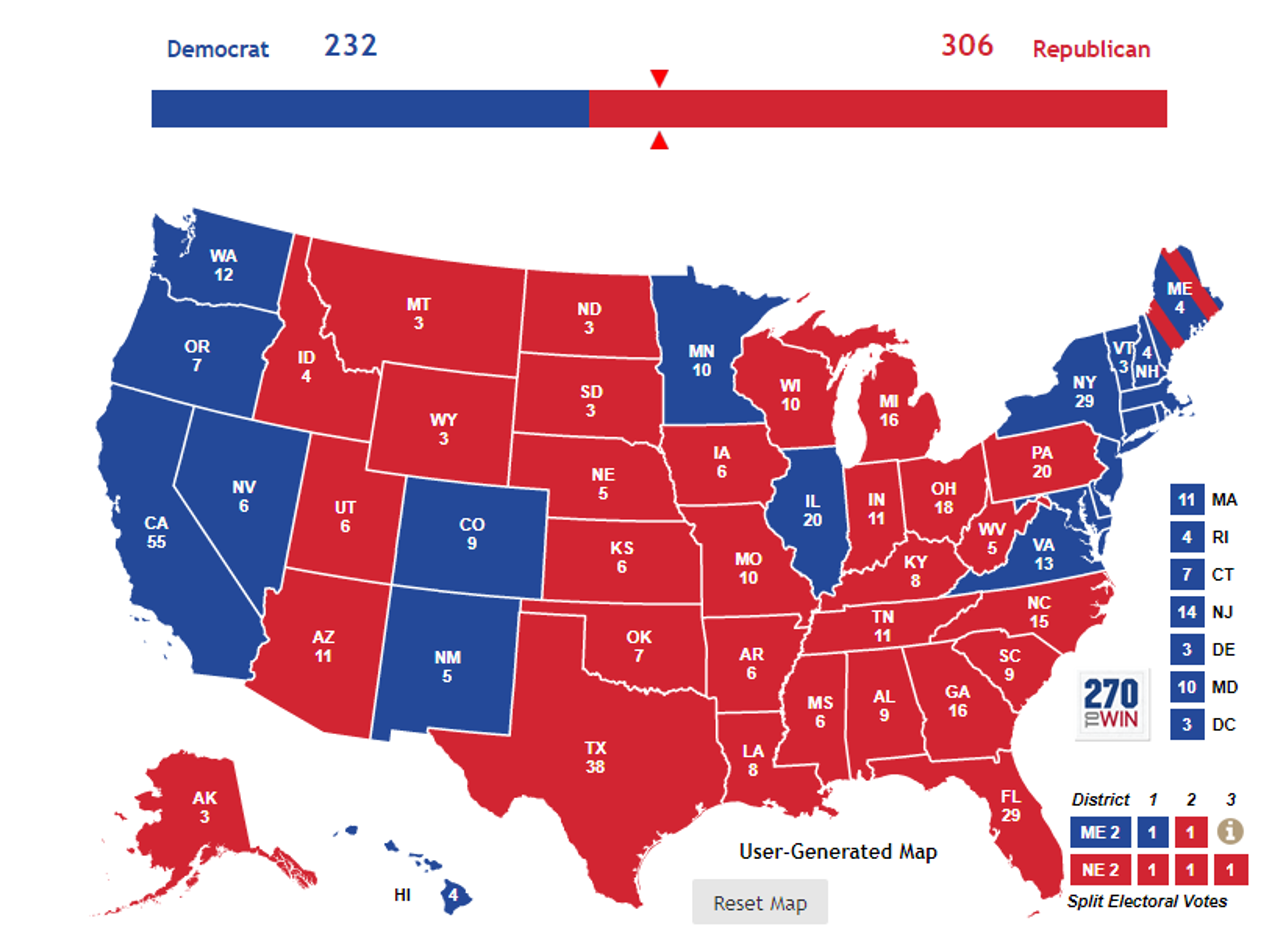Organization Trends
“Revolt of the Deplorables:” Hillary Clinton Makes It to Wisconsin


Recently Hillary Clinton announced she will be promoting her latest book in Milwaukee, Wisconsin. The event, held almost one year to the day after the election, will detail What Happened—Clinton’s effort to explain why she lost the 2016 presidential race. Citing her failure to visit Wisconsin—a state that hasn’t voted Republican in a presidential election since 1984—might be a great starting point.
Indeed, Capital Research Center’s Chief Investigative Officer, Dr. Steven J. Allen, discussed Donald Trump’s historic upset in the 2016 presidential election in a recent speech given to the Mensa convention entitled, “Revolt of the Deplorables.” The Trump campaign, Dr. Allen explains, ran with a very different electoral strategy from the Clinton campaign. Most Democrats’ assumptions about the so-called “Blue Wall”—states which historically vote for Democratic presidential nominees—were shattered when the Rust Belt states of Wisconsin, Michigan, and Pennsylvania were flipped by Republicans. As Dr. Allen puts it:
On election day, Clinton aides on the campaign plane popped open a bottle of champagne.
The New York Times gave her an 85 percent chance to win.
She had an 89 percent chance of winning Pennsylvania, a 93 percent chance of winning Wisconsin, and a 94 percent chance of winning Michigan.
She would lose them all.
Political prognosticators almost entirely agreed going into Election Night that Hillary Clinton would beat Donald Trump in a landslide. Again, this was largely based on assumptions about how states would vote grounded in previous electoral victories. Political experts like Larry Sabato and Nate Silver estimated an electoral outcome that was something along the lines of the map below, with 323 electoral votes going to Clinton and 215 to Trump. Dr. Allen averaged out many experts’ predictions and achieved an electoral forecast favoring Clinton:

Estimate of 2016 election assumptions, beginning of November 8, 2016
Let’s start with the predictions of how states were going to vote.
A lot of it, I believe, was wishful thinking on the part of the news media. Their own data showed that the election was close, but they chose repeatedly to interpret that data in the way they considered the most favorable.
During the campaign, I kept track of all the prognosticators, the Nate Silvers and Larry Sabatos and the prediction markets, where you could bet on the outcome. I came up with a way of digitizing their predictions, so that predictions in different formats could be averaged together.
But the reality was strikingly different, Dr. Allen points out, as Trump outperformed Clinton in key states: Wisconsin, Pennsylvania, and Michigan. Many prognosticators failed to factor the data which suggested a small lead for Clinton in Florida and North Carolina. When these two critical battleground states voted for Trump, he had, in essence, won the 2016 presidential election. All he needed was one of two combinations of Wisconsin, Michigan, Pennsylvania, and Maine’s second congressional district (electoral rules in Maine allow the state to split its electoral votes) to seal his victory. Here is the final map of the electoral outcome in the 2016 election:

The final results of the 2016 presidential election by state.
In Dr. Allen’s words:
Of the 91 votes here on this list, he needed 55 to win. That would be Florida and North Carolina, that’s 44 votes… plus one of the other three states. (If it was Wisconsin, he would need the one vote from Maine to get to 270, which is why the Trump campaign put so much effort toward that one part of one state.)
[. . .]
Then there’s Wisconsin, where the Democrats’ miscalculations go back several years.
Governor Scott Walker had pushed through changes that weakened government-employee unions, which sparked recall campaigns directed at Walker and several other officials. Republicans won those fights. Emboldened, they passed a Right to Work law, meaning that no one could be forced to join or pay dues to a union as a condition of employment.
The Walker reforms cost the unions some $600 million in dues over five years, money that probably would have made the difference in 2016.
By the way, the Clinton people made fun of the Trump campaign for going in the final days to campaign in Minnesota, which the Democrats have carried since 1972. And, sure enough, Trump lost Minnesota by a point and a half. But what the Clintonites didn’t appreciate was that Trump’s campaigning in Minneapolis was broadcast right into central Wisconsin. His trip to Minnesota helped him carry Wisconsin.
Trump won the state by less than 23,000, while the Green Party candidate Jill Stein got 31,000.
Hillary did not visit Wisconsin once during the fall campaign.
Tickets to the Clinton event in Wisconsin aren’t cheap, either; the highest-priced tickets run at $2,400 for a “VIP Experience” package.
To watch Dr. Steven J. Allen’s full speech on “Revolt of the Deplorables,” click here:


